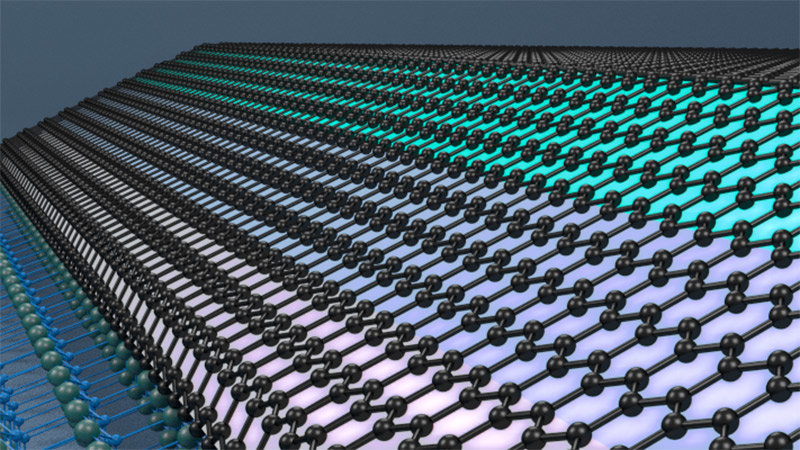Electronic Highways on the Nanoscale
For the first time, the targeted functionalization of carbon-based nanostructures allows the direct mapping of current paths, thereby paving the way for novel quantum devices
 open gallery
open gallery -

In the Laboratory of the Department of Analytics of Solid Surfaces at the Chemnitz University of Technology, a structured silicon carbide crystal is heated in a preparation chamber of a scanning tunneling microscope, so that small graphene structures can be formed. Photo: Jacob Müller -

Scheme of a graphene wire on silicon carbide: In the tiny wire with a width of 40 nanometers, the electrons on the "colored highways" move ballistically, this means in a straight line, without scattering and mutual influence, along the black graphene nanostructures. Graphic: Johannes Aprojanz -

Prof. Dr. Christoph Tegenkamp, chair of the Department of Analytics of Solid Surfaces at the Chemnitz University of Technology, leads the research project. Photo: Jacob Müller
Computers are getting faster and increasingly powerful. However, at the same time computing requires noticeably more energy, which is almost completely converted to wasted heat. This is not only harmful to the environment, but also limits further miniaturization of electronic components and increase of clock rates. A way out of this dilemma are conductors with no electrical resistance. Based on carbon nanostructures, such conductors can be realized. By applying sophisticated heating processes to nanostructured silicon carbide crystals, small graphene structures, so-called graphene nanoribbons, can be produced at their edges. Graphene is a single layer of carbon atoms arranged in a honeycomb lattice.
Physicists at the Chemnitz University of Technology in collaboration with researchers from the University of Twente (Netherlands) and the MAX IV Laboratory in Lund (Sweden) succeeded now to produce and to characterize such so-called ballistic wires. "The intriguing property of such conductors is that the electrons pass through these tiny wires without heating them - ideally irrespective of the wire length," explains Prof. Dr. Christoph Tegenkamp, chair of the Department of Analytics of Solid Surfaces at the Chemnitz University of Technology. In a variety of complex experiments including atomic force and multi-tip scanning tunneling microscopy, the adjacent quantum transport channels were measured in detail and even imaged directly at room temperature and atmosphere on the nanoscale. "Surprisingly, we could now even identify several spatially separated channels on one wire that apparently do not influence each other", explains Johannes Aprojanz, who is currently working on this research topic at the Chemnitz University of Technology in his doctoral thesis.
In cooperation with theorists from Copenhagen and Barcelona, this unique effect has been traced back to an asymmetric interaction of the edges with the substrate, as reported in the journal Nature Communication in its current issue. The authors of the study are sure that this type of functionalization is also interesting for topological effects in other 2D materials and shows new ways for the design of future quantum devices. "We are opening the door a bit wider for computers that are hardly warming up", said Tegenkamp.
Publication: https://www.nature.com/articles/s41467-018-06940-5
Homepage for the Department of Analytics of Solid Surfaces: https://www.tu-chemnitz.de/physik/AFKO/index.html.en
More information is available from Prof. Dr. Christoph Tegenkamp, Tel. +49 371 531-33103, E-mail christoph.tegenkamp@physik.tu-chemnitz.de.
Mario Steinebach
31.10.2018





